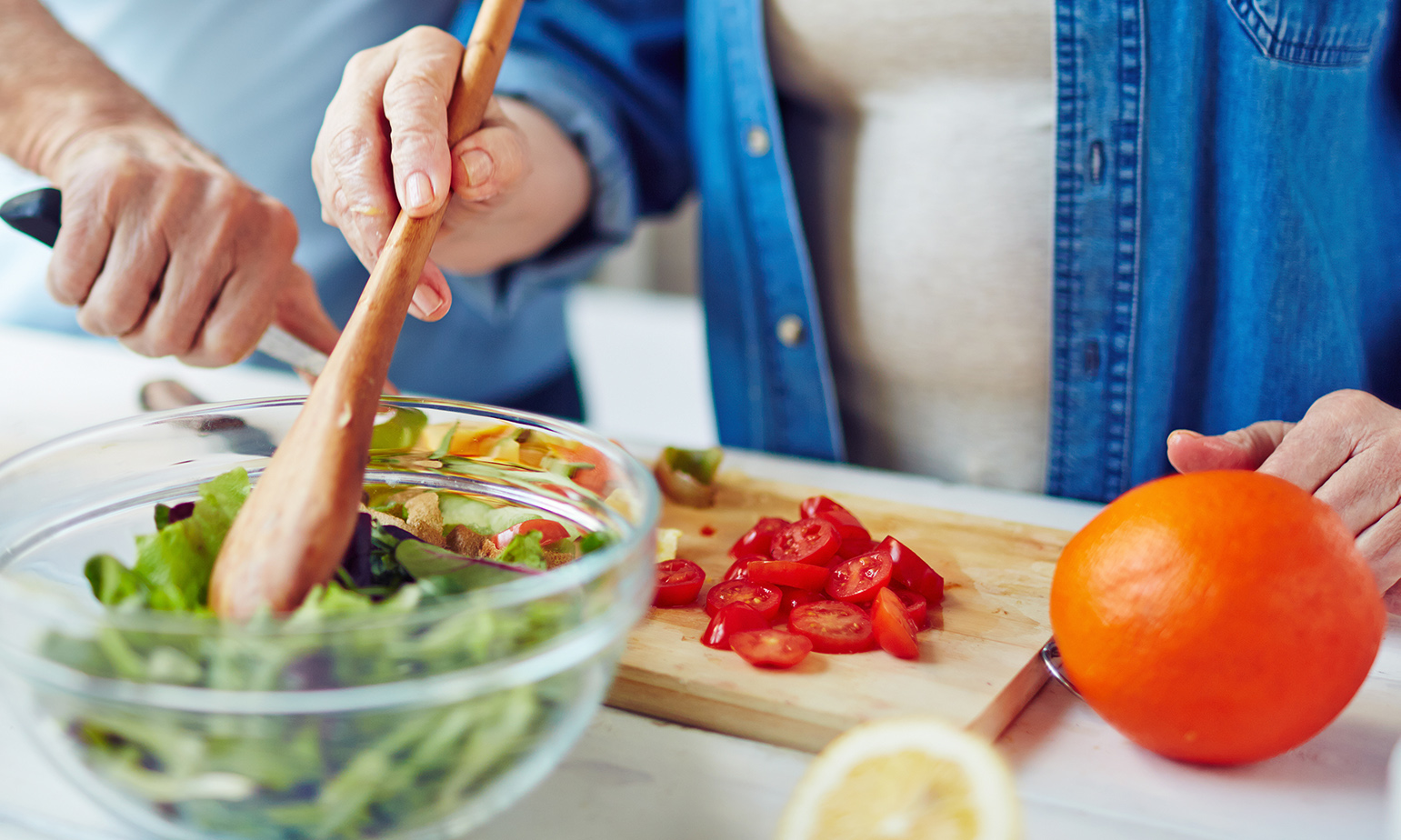health
Food Helps When You Have Cancer: Making You Stronger

Introduction
Facing cancer is a formidable challenge, but understanding the significant role of food in this journey can be empowering. Nutrition serves as a cornerstone in supporting the body during cancer treatment, aiding in recovery, and bolstering overall well-being. Let’s delve into how food can act as a powerful ally in the fight against cancer.
Understanding the Role of Food in Cancer Treatment
Nutritional Requirements during Cancer
During cancer treatment, the body’s nutritional needs often escalate. Adequate intake of nutrients becomes vital to bolster immune function, facilitate tissue repair, and sustain energy levels. Ensuring a well-balanced diet rich in essential vitamins, minerals, and proteins becomes imperative.
Impact of Cancer Treatment on Appetite
Chemotherapy, radiation therapy, and other treatments can significantly affect appetite and taste perception. Nausea, vomiting, and alterations in taste preferences may lead to reduced food intake. It’s crucial to explore strategies to stimulate appetite and enhance the palatability of meals.

Image by: yendex.com
Choosing the Right Foods
Emphasizing Nutrient-Dense Foods
Nutrient-dense foods such as fruits, vegetables, whole grains, and lean proteins provide a plethora of essential nutrients vital for health. These foods are rich in vitamins, minerals, and antioxidants, fortifying the immune system and aiding in recovery.
Importance of Protein Intake
Protein plays a pivotal role in tissue repair and muscle maintenance during cancer treatment. Prioritizing sources of lean protein such as poultry, fish, beans, and tofu is essential to support healing and prevent muscle wasting.
Incorporating Fruits and Vegetables
Fruits and vegetables are brimming with vitamins, minerals, and antioxidants crucial for combating cellular damage. A diverse array of colorful produce ensures a spectrum of nutrients that promote overall health and vitality.

Image by: yendex.com
Managing Symptoms Through Diet
Combatting Fatigue
Fatigue is a common companion during cancer treatment, impacting appetite and energy levels. Consuming small, frequent meals comprising complex carbohydrates and protein can help mitigate fatigue and sustain energy throughout the day.
Alleviating Digestive Issues
Digestive disturbances like constipation, diarrhea, and nausea are frequent side effects of cancer treatment. Opting for bland, easily digestible foods and staying hydrated can alleviate these symptoms and promote gastrointestinal comfort.
Addressing Taste Changes
Changes in taste perception can diminish the enjoyment of food during cancer treatment. Experimenting with diverse flavors, textures, and temperatures can revitalize mealtime. Additionally, using herbs, spices, and marinades can amplify the taste of dishes.
Food Safety and Hygiene
Reducing Risk of Infection
Maintaining food safety and hygiene is paramount for individuals undergoing cancer treatment, as their weakened immune systems render them susceptible to infections. Adhering to proper food handling practices and hygiene protocols minimizes the risk of foodborne illness.
Safe Food Handling Practices
Avoiding consumption of raw or undercooked foods and unpasteurized dairy products is essential to mitigate the risk of foodborne pathogens. Practicing diligence in handling and storing perishable foods can safeguard against contamination.

Image by: yendex.com
Emotional Support through Food
Creating Comforting Meals
Food transcends mere sustenance; it holds the power to provide solace and emotional nourishment. Crafting or receiving comforting meals from loved ones can offer a sense of warmth and support amidst the turmoil of cancer treatment.
Sharing Meals with Loved Ones
Sharing meals with family and friends fosters a sense of connection and solidarity. Breaking bread together not only nourishes the body but also nourishes the soul, fostering bonds and creating cherished memories.
Alternative Therapies and Dietary Supplements
Potential Benefits and Risks
Some individuals explore alternative therapies and dietary supplements to complement conventional cancer treatments. While certain supplements and therapies may offer benefits, it’s imperative to consult healthcare professionals to assess safety and efficacy.
Consulting with Healthcare Professionals
Engaging in dialogue with healthcare providers regarding any dietary supplements or alternative therapies is crucial to ensure compatibility with ongoing treatments. Healthcare professionals can offer invaluable insights and guidance tailored to individual needs.
Staying Hydrated
Importance of Hydration
Maintaining hydration is paramount for supporting bodily functions and optimizing overall health. Adequate fluid intake aids in toxin elimination, electrolyte balance, and organ function, particularly vital during cancer treatment.
Choosing the Right Beverages
Prioritizing hydrating beverages such as water, herbal teas, and diluted fruit juices is essential. Steering clear of caffeinated and sugary beverages mitigates the risk of dehydration and supports optimal hydration status.

Image by: yendex.com
Physical Activity and Nutrition
Maintaining Strength and Energy
Incorporating regular physical activity into daily routines enhances muscle strength and sustains energy levels. Engaging in activities like walking, yoga, or light strength training promotes overall well-being during cancer treatment.
Incorporating Exercise Safely
Before embarking on an exercise regimen, consulting healthcare professionals ensures safety and appropriateness. Gradually increasing activity levels and heeding the body’s signals prevent injury and mitigate fatigue.
Coping with Changes in Appetite
Adjusting Meal Sizes and Frequency
Flexibility in meal sizes and frequency accommodates fluctuations in appetite. Consuming small, frequent meals and snacks ensures adequate nutrition without overwhelming the digestive system.
Seeking Support from Dietitians
Registered dietitians offer tailored nutrition counseling and support for individuals navigating cancer treatment. Collaborating with a dietitian facilitates personalized dietary strategies to address specific concerns and optimize nutritional intake.
Creating a Supportive Environment
Family and Caregiver Involvement
Involving family members and caregivers in meal planning and preparation fosters a supportive environment. Sharing responsibilities in the kitchen eases burdens and ensures access to nutritious meals.
Community Resources
Exploring community resources such as support groups and meal delivery services augments support networks. Connecting with peers facing similar challenges provides invaluable emotional support and camaraderie.
Meal Planning and Preparation Tips
Batch Cooking and Freezing Meals
Streamlining meal preparation by batch cooking and freezing meals conserves time and energy. Having a stockpile of nutritious meals on hand alleviates mealtime stress and ensures access to wholesome options.
Simple and Easy Recipes
Simplicity reigns supreme when it comes to meal preparation during cancer treatment. Opting for straightforward recipes featuring minimal ingredients and preparation steps simplifies the cooking process without compromising nutrition or flavor.
Monitoring and Adjusting Diet
Listening to Body Signals
Attentively listening to the body’s cues facilitates intuitive eating during cancer treatment. Tuning into hunger, satiety, and energy levels guides dietary choices and ensures nutritional needs are met.
Keeping Track of Dietary Changes
Maintaining a food journal aids in tracking dietary changes and identifying patterns over time. Documenting dietary intake and associated symptoms offers insights into individual nutritional requirements and preferences.

Image by: yendex.com
Celebrating Food Victories
Recognizing Milestones
Acknowledging dietary achievements, no matter how small, bolsters motivation and morale. Celebrating milestones such as trying new foods or meeting nutrition goals fosters a sense of accomplishment and empowerment. Explore More About (Music Impacts On Health)
Finding Joy in Food
Cultivating a sense of enjoyment and appreciation for food enhances the dining experience. Experimenting with diverse flavors, textures, and cuisines infuses mealtime with excitement and pleasure.
| Aspect | Traditional Cancer Treatment | Incorporating Nutrition |
|---|---|---|
| Focus | Targeting cancer cells through chemotherapy, radiation therapy, surgery, etc. | Enhancing overall health and well-being through dietary interventions |
| Primary Goal | Eliminating cancer cells and reducing tumor burden | Supporting the body’s immune system, promoting healing, and minimizing treatment side effects |
| Approach | Medical interventions administered by healthcare professionals | Integrating dietary modifications and lifestyle changes |
| Key Components | Chemotherapy, radiation therapy, surgery, immunotherapy, etc. | Nutrient-dense foods, hydration, dietary supplements, emotional support |
| Side Effects | Nausea, vomiting, fatigue, hair loss, immune suppression, etc. | Digestive disturbances, changes in taste perception, fatigue, weakened immunity, etc. |
| Treatment Duration | Typically administered over a specific period, varying based on cancer type and stage | Ongoing dietary modifications throughout treatment and recovery |
| Professional Guidance | Provided by oncologists, surgeons, nurses, and other healthcare professionals | Guidance from registered dietitians, nutritionists, and healthcare team |
| Efficacy | Directly targets cancer cells to inhibit growth and promote remission | Supports overall health, boosts immune function, aids in recovery, and mitigates treatment side effects |
| Patient Involvement | Requires compliance with prescribed treatments and follow-up appointments | Active participation in meal planning, dietary changes, and lifestyle modifications |
| Long-Term Impact | May lead to remission, recurrence, or long-term side effects | Enhances overall health and quality of life, reduces risk of recurrence, and supports survivorship |
| Cost | Expensive, often covered by health insurance | May involve additional costs for specialty foods, supplements, and consultations |
| Risk Factors | Potential for treatment-related complications and side effects | Risk of malnutrition, dehydration, and dietary imbalances if not managed properly |
| Holistic Approach | Focuses primarily on targeting cancer cells | Considers the whole person, addressing physical, emotional, and nutritional needs |
| Complementary Therapies | May incorporate complementary therapies such as acupuncture, massage, etc. | Integrates nutritional therapies, herbal supplements, mindfulness practices, etc. |
| Overall Outcome | Aims to eradicate cancer and achieve long-term survival | Enhances quality of life, supports healing, and promotes overall well-being |
Conclusion
In conclusion, food emerges as a potent ally in the battle against cancer, offering sustenance, support, and solace. By embracing the significance of nutrition, making informed dietary choices, and leveraging support from healthcare professionals and loved ones, individuals undergoing cancer treatment can optimize their well-being and enhance their quality of life.
health
PBMC Samples for Immune Profiling and Biomarker Discovery

Introduction
In today’s rapidly evolving biomedical landscape, understanding the human immune system is essential for developing targeted therapies, diagnostic tools, and disease-monitoring strategies. Among the most valuable resources available to immunologists and translational researchers are Peripheral Blood Mononuclear Cells (PBMCs) a diverse population of immune cells that play a central role in human immunity. Whether for vaccine development, immuno-oncology studies, infectious disease research, or chronic inflammatory conditions, PBMCs remain a gold standard for immune profiling and biomarker discovery.
This article explores why researchers worldwide rely on PBMC samples, how high-quality processing influences scientific outcomes, and why specialized peripheral blood mononuclear cells services, blood mononuclear cells services, and peripheral mononuclear cells services have become indispensable for advanced biomedical research.
PBMCs: A Critical Window Into the Human Immune System

PBMCs composed mainly of lymphocytes (T cells, B cells, NK cells) and monocytes are central players in innate and adaptive immunity. Their unique functional and phenotypic diversity makes them ideal for studying immune pathways, disease mechanisms, and therapeutic responses.
Because PBMCs can be isolated directly from peripheral blood with minimal invasiveness, they provide a practical and scalable resource for:
- Immunophenotyping and immune monitoring
- Functional studies involving cytokine production
- Drug screening for immunomodulatory compounds
- Vaccine efficacy testing
- Disease-specific biomarker identification
- Genetic and transcriptomic profiling
Given their versatility, PBMCs serve as a reliable foundation for both basic discovery science and clinical trial research.
Why PBMC Samples Are Essential for Immune Profiling
1. Ability to Capture Real-Time Immune Activity
PBMCs reflect current immunological status, allowing researchers to analyze immune function at specific time points during disease progression or treatment. This real-time snapshot is invaluable for:
- Monitoring immune activation
- Assessing inflammatory markers
- Tracking T-cell exhaustion and activation states
- Evaluating vaccine-induced immune responses
As therapeutic development moves toward more personalized and biomarker-driven approaches, PBMCs enable researchers to characterize immune responses with precision.
2. Ideal for Multiparametric Immune Analysis
High-dimensional platforms such as flow cytometry, mass cytometry (CyTOF), ELISpot, and single-cell RNA sequencing depend on viable, well-preserved PBMCs. These technologies enable researchers to simultaneously evaluate:
- Cell surface marker expression
- Intracellular cytokines
- Functional immune responses
- Cell-type heterogeneity
This level of complexity is crucial for understanding disease mechanisms in fields such as oncology, autoimmune disease, and infectious disease.
3. Consistency Across Longitudinal Studies
Long-term clinical studies depend on consistent sample collection and processing. PBMCs provide an ideal resource because they can be:
- Cryopreserved for extended periods
- Thawed with high viability when processed correctly
- Standardized across large, multi-site clinical studies
Researchers rely on PBMCs to ensure reproducibility, which is especially important in biomarker-driven trials.
PBMC Samples and Biomarker Discovery
1. Identifying Disease-Specific Immune Signatures
In recent years, PBMCs have become central to identifying immune-related biomarkers in conditions such as:
- Cancer (particularly immuno-oncology)
- Autoimmune disorders (e.g., lupus, rheumatoid arthritis)
- Infectious diseases (HIV, tuberculosis, COVID-19)
- Neuroinflammatory diseases
- Metabolic and chronic inflammatory disorders
These pbmc disease samples help reveal immune dysregulation patterns, such as T-cell exhaustion, cytokine imbalances, or abnormal monocyte activation—offering powerful insights into disease mechanisms.
2. Predicting Patient Response to Therapy
Biomarkers derived from PBMCs can help predict treatment outcomes, especially in fields like:
- Checkpoint inhibitor therapy
- CAR-T cell therapy
- Antiviral treatments
- Immunomodulatory therapies
PBMC-based biomarkers guide patient stratification, enabling more targeted clinical trials and reducing variability in therapeutic development.
3. Supporting Precision Diagnostics
Researchers increasingly use PBMCs to develop diagnostic assays, including:
- Immune activation signatures
- Cytokine panels
- Cell population ratios
- Gene-expression profiles
These biomarkers support personalized medicine approaches across several therapeutic areas, making PBMCs a vital asset for biotech and pharma companies.
The Role of Specialized PBMC Services
As research demands grow, companies developing therapies, diagnostics, and immuno-modulating drugs require standardized, high-quality PBMCs. This has significantly increased reliance on professional peripheral blood mononuclear cells services, blood mononuclear cells services, and peripheral mononuclear cells services that provide:
1. High-Quality Isolation and Processing
Standardization in:
- Ficoll or density-gradient separation
- Automated PBMC isolation
- RBC/platelet removal
- Cryopreservation protocols
- Viability testing
ensures reliable performance across experiments and long-term studies.
2. Disease-Specific PBMC Collections
Many researchers require pbmc disease samples from patients with cancer, autoimmune disease, metabolic disorders, or infectious diseases. Professional biospecimen providers ensure:
- IRB-approved collection
- Detailed clinical metadata
- Consistent processing timelines
- High post-thaw viability
These factors directly influence the success of biomarker discovery and immune profiling research.
3. Scalability for Trials and Multi-Site Studies
PBMC outsourcing services help streamline:
- Large-volume procurement
- Longitudinal sample collection
- Sample banking and storage
- Global distribution for multi-center trials
This support is critical for pharma and biotech companies running Phase I–IV trials.
Why High-Quality PBMC Samples Determine Research Success
Ultimately, PBMCs influence the accuracy, reproducibility, and credibility of scientific findings. Poor-quality samples improperly isolated, poorly cryopreserved, or inconsistently processed can compromise entire datasets, delay studies, or lead to misleading conclusions.
Reliable PBMC sourcing ensures:
- High cell viability
- Preserved immune function
- Reproducible biomarker readouts
- Confidence in downstream analytical assays
As biomedical research becomes increasingly immune-centric, the importance of dependable PBMC resources continues to grow.
Conclusion
PBMC samples remain the foundation of modern immunology research, enabling breakthroughs in immune profiling, vaccine development, immunotherapy, and biomarker discovery. With the growing complexity of immune analysis and the demand for standardized biospecimens, researchers and biotech organizations increasingly rely on specialized peripheral blood mononuclear cells services, blood mononuclear cells services, peripheral mononuclear cells services, and disease-specific PBMC collections.
From understanding disease mechanisms to developing novel therapeutics, PBMCs provide the clarity and reliability scientists need to push scientific innovation forward.
health
What Causes Warts to Appear Inside the Mouth?

Introduction
When you first notice a small bump on your tongue or inside your mouth, it can be easy to ignore. However, over time, you may start to wonder what caused it and whether it will go away on its own. Many people turn to medical guidance to understand tongue warts’ causes and treatment, because these growths often appear quietly and can change subtly before you even notice them.
Oral warts usually start as soft, painless bumps, yet you might feel them when moving your tongue or swallowing. They develop slowly, as the virus behind them settles into the soft tissue, which makes the early stages easy to miss. By paying attention to these changes, you can recognize the signs sooner and take steps to address them safely.
The Role of HPV in Oral Warts
1. How HPV Enters the Mouth
Most oral warts appear because HPV finds a small entry point inside your mouth. You may have tiny cuts or soft spots that feel normal, yet these areas make it easier for the virus to settle. Even a small abrasion can give HPV the space it needs. You often get exposed through common habits. For example, close contact with saliva or oral surfaces is one of the simplest ways it spreads.
Because HPV works quietly, you rarely feel anything when it enters. However, as time passes, the virus takes hold in the cells and starts building those tiny clusters. You might not notice signs for weeks, which makes it harder to trace where it came from.
2. Why Some People Develop Warts, and Others Do Not
You may wonder why your friend stays clear while you deal with bumps. A lot depends on how your immune system reacts. Some people fight the virus right away, yet others let it stay active longer. Stress, frequent irritation, and overall health play a big role too. These factors make some people more sensitive to viral changes, and that leads to visible warts inside the mouth.
Everyday Behaviors That Increase the Chances of Oral Warts
Daily habits that seem harmless can raise your risk. You might share drinks often without thinking twice. You may bite the inside of your cheek when stressed. Even constantly touching your mouth with unwashed hands adds to the chance of infection. These small moments allow the virus to settle into the tissue.
Because you use your mouth so much throughout the day, the lining inside stays active and delicate. When it faces repeated irritation, it becomes easier for infections to grow. You may not feel these tiny openings at all, but the virus notices them quickly.
Below are common everyday actions that may increase your chances:
- Sharing drinks
- Using unclean dental tools
- Lip to mouth contact
- Long-term irritation inside the mouth
These habits do not guarantee warts, yet they influence how your mouth responds to viral exposure.
Also Read: What You Should Know About Blood Cancer: Symptoms and Diagnosis
Signs That Suggest the Wart Is Growing or Spreading
When a wart grows, you start noticing changes in texture first. It may feel rougher than the surrounding skin, or it may look slightly raised. Because the mouth is sensitive, these small differences stand out. At first, you might think it is just a harmless bump, yet ongoing changes tell you otherwise.
Sometimes the wart grows slowly. Other times, it spreads into small clusters. When this happens, the area may look uneven or cauliflower-like. You may notice the wart shifting in size when you press your tongue against it.
Although these bumps stay painless most of the time, you should still pay attention to their shape. Large or fast-growing warts need medical guidance. When you notice that the bump keeps coming back or getting wider, that is a sign to get it checked.
Conditions That Make You More Sensitive to Oral Warts
Your mouth reacts strongly to your health. When your immune system slows down, you become more prone to viral infections. Stress plays a bigger role than most people think. You might feel tired, overloaded, or anxious. These emotional states affect your immunity and make it easier for warts to grow.
Existing mouth injuries also matter. A sore spot or a cracked area on your lip becomes an open doorway for the virus. When the tissue already struggles to heal, HPV finds a place to attach. Because these injuries are common, you may not notice them until the wart appears.
You may also face a higher risk if you deal with dental problems or certain lifestyle habits. Below are common factors:
- Gum disease
- Chronic biting of cheeks or lips
- Vitamin deficiency
- Smoking or vaping
These conditions weaken your natural defense and allow oral warts to settle more easily.
Treatment Options You May Be Offered
Once a specialist looks at the wart, you get several treatment choices. Doctors often remove warts that show signs of spreading. Removal methods are simple and usually done in a short visit. These include freezing, surgical trimming, or laser removal. The method depends on the size and location.
You also get instructions on how to care for the area afterward. This part matters because proper aftercare prevents the wart from returning. Your doctor may suggest rinses, topical solutions, or small lifestyle changes to help with healing.
In some cases, when the growth looks unusual or does not improve, a biopsy is recommended. This step helps confirm that the tissue is safe. It also rules out other oral conditions that may look similar. While this can sound intimidating, it gives you clarity.
When You Should See a Specialist
You should meet a specialist when the wart keeps returning or becomes painful. Mouth tissues heal fast, so anything that lingers needs attention. If the bump changes color or looks irregular, you should have it checked soon.
A specialist understands these patterns clearly. You get answers based on real tests instead of guesswork. Early guidance protects your oral health and helps you avoid long-term issues.
How Clinical Research Helps Us Understand Mouth Warts Better
Clinical research offers new ways to study viral behavior. You benefit from this because it leads to better treatments. Research teams work with different cases, observe patterns, and track how the virus changes over time.
These studies also help doctors develop safer methods to manage oral warts. By learning from each patient, researchers build stronger evidence that shapes the way specialists treat these conditions.
Conclusion
Keeping an eye on small bumps inside your mouth helps you catch potential problems early. You now understand how oral warts form, the factors that increase your risk, and when it’s important to seek medical guidance. If you want to take an active role in supporting research and helping advance treatment options, you can join warts research studies in Boston.
We, at MBCP, are dedicated to improving patient care through research and clinical studies. By participating, you can gain access to expert guidance and innovative treatment approaches. Your involvement can make a difference in understanding and managing oral warts effectively.
health
Melbourne Psychotherapy Services | Cairnmillar Institute

Introduction
Mental health is an important part of overall well-being, and the right support can really help. Melbourne has many psychotherapy services for stress, anxiety, depression, and other emotional challenges. Cairnmillar Institute is a leading provider, offering professional and personalised support. With caring therapists and proven methods, Cairnmillar helps individuals, families, and groups improve their mental health and live more fulfilling lives.
Understanding Psychotherapy
Psychotherapy is a type of therapy that helps people understand their thoughts, feelings, and behaviors. It can help with issues like anxiety, depression, trauma, and relationship problems. Sessions usually involve talking with a trained therapist in a safe, confidential space. Psychotherapy also teaches coping skills and helps build emotional strength. Melbourne’s services are designed to be effective, accessible, and tailored to each person.
People often seek psychotherapy to:
- Understand themselves better
- Improve relationships
- Handle life changes
- Explore long-term patterns or reactions
- Build a stronger sense of identity and purpose
- Learn healthier ways to cope and communicate
Psychotherapy is different for everyone. This flexibility makes it a trusted and effective approach for many people in Melbourne.
Role of Cairnmillar Institute Support
The Cairnmillar Institute plays an important role in supporting psychotherapy services in Melbourne. It provides trained therapists, counseling programs, and mental health workshops for clients. The institute also trains future therapists, ensuring that the city has skilled professionals available. Through its support, individuals can access structured, evidence-based therapy, while therapists receive guidance and professional development. Cairnmillar acts as both a service provider and an educational hub, strengthening Melbourne’s mental health resources.
Benefits of Melbourne Psychotherapy Services
Psychotherapy helps people manage stress, anxiety, depression, and other emotional challenges. Therapists provide a safe place to share feelings and learn coping skills. Psychotherapy also improves relationships, supports personal growth, and boosts overall well-being. Institutes like Cairnmillar give professional guidance and tools to help clients live healthier, more balanced lives.
Services Offered by Cairnmillar Institute
Cairnmillar Institute offers many types of psychotherapy, including individual, couples, family, and group therapy. Each service is designed to meet specific needs and help clients reach their goals. Therapists use proven methods like cognitive-behavioral therapy, mindfulness, and psychodynamic therapy to help people understand their thoughts and behaviors, reduce stress, and improve mental health.
1. Individual Therapy
Individual therapy focuses on personal challenges and emotional well-being. It allows clients to explore their thoughts and feelings with a trained professional. Common issues addressed in individual therapy include anxiety, depression, grief, trauma, and self-esteem concerns. Therapists work closely with clients to develop personalized strategies and coping skills. Individual therapy at Cairnmillar Institute provides a safe space for reflection, self-discovery, and growth.
2. Couples and Family Therapy
Relationships can be complex, and conflicts can affect emotional health. Couples and family therapy help people improve communication, resolve conflicts, and strengthen connections. Cairnmillar Institute offers supportive therapy sessions that guide couples and families in understanding each other better. Therapists encourage open communication and provide tools to manage disagreements in healthy ways. These services aim to foster stronger, more positive relationships.
3. Group Therapy
Group therapy offers the chance to connect with others facing similar challenges. In a supportive setting, participants share experiences, learn coping strategies, and gain new perspectives. Cairnmillar Institute’s group therapy sessions cover various topics, such as anxiety management, grief support, and stress reduction. Being part of a group helps clients feel less isolated and builds a sense of community and belonging.
Why Choose Cairnmillar Institute
Cairnmillar Institute is recognized for its professional and compassionate approach to mental health care. Therapists are highly trained and experienced in a range of therapeutic methods. They focus on creating a safe, welcoming environment for all clients. Cairnmillar also emphasizes personalized care, ensuring therapy is tailored to each individual’s needs. With a strong commitment to evidence-based practice, the Institute helps clients achieve meaningful improvements in mental health and well-being.
Benefits of Psychotherapy
Engaging in psychotherapy offers many benefits. It can reduce stress, improve mood, and increase self-awareness. Therapy helps individuals develop better coping strategies, manage emotions, and build healthier relationships. Regular sessions can also promote personal growth, resilience, and a greater sense of life satisfaction. By choosing professional psychotherapy services in Melbourne, individuals can take an important step toward long-term mental wellness.
Accessing Psychotherapy Services in Melbourne
Accessing psychotherapy in Melbourne is easier than ever. Cairnmillar Institute provides flexible scheduling options, including in-person and online sessions. This ensures that clients can receive support in a convenient and comfortable way. The Institute also accepts referrals from general practitioners and other healthcare providers, helping clients navigate the mental health system smoothly. With a focus on accessibility, Cairnmillar makes it simple for people to get the help they need when they need it most.
Conclusion
Melbourne psychotherapy services, especially those offered by Cairnmillar Institute, provide valuable support for anyone seeking better mental health and emotional well-being. With a range of therapy options, professional therapists, and evidence-based approaches, Cairnmillar helps individuals, couples, and families address challenges and achieve meaningful change. By seeking professional guidance, people can learn to manage stress, improve relationships, and lead more fulfilling lives. Cairnmillar Institute is dedicated to helping the Melbourne community thrive through compassionate and effective psychotherapy.
-
Business2 years ago
Cybersecurity Consulting Company SequelNet Provides Critical IT Support Services to Medical Billing Firm, Medical Optimum
-
Business2 years ago
Team Communication Software Transforms Operations at Finance Innovate
-
Business2 years ago
Project Management Tool Transforms Long Island Business
-
Business2 years ago
How Alleviate Poverty Utilized IPPBX’s All-in-One Solution to Transform Lives in New York City
-
health2 years ago
Breast Cancer: The Imperative Role of Mammograms in Screening and Early Detection
-
Sports2 years ago
Unstoppable Collaboration: D.C.’s Citi Open and Silicon Valley Classic Unite to Propel Women’s Tennis to New Heights
-
Art /Entertainment3 years ago
Embracing Renewal: Sizdabedar Celebrations Unite Iranians in New York’s Eisenhower Park
-
Finance3 years ago
The Benefits of Starting a Side Hustle for Financial Freedom






























